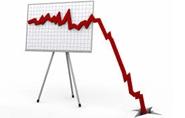Analysis

February 21, 2018
Home Sales Fall Due to Tight Supply and Affordability
Written by Sandy Williams
Existing home sales fell for the second consecutive month in January, dropping 3.2 percent to a seasonally adjusted annual rate of 5.38 million, according to data from the National Association of Realtors. Compared to a year ago sales are down 4.8 percent, the steepest decline since 5.5 percent in August 2014.
Inventory rose 4.1 percent in January to 1.52 million existing homes for sale, but was still 9.5 percent lower than a year ago. Housing inventory would last 3.4 months at the current sales rate.
“The utter lack of sufficient housing supply and its influence on higher home prices muted overall sales activity in much of the U.S. last month,” said Lawrence Yun, NAR Chief Economist. “While the good news is that realtors in most areas are saying buyer traffic is even stronger than the beginning of last year, sales failed to follow course and far lagged last January’s pace. It’s very clear that too many markets right now are becoming less affordable and desperately need more new listings to calm the speedy price growth.”
The median price for an existing home rose 5.8 percent year-over-year to $240,500 in January.
“Another month of solid price gains underlines this ongoing trend of strong demand and weak supply,” said Yun. “However, there’s hope that the tide is finally turning. There was a nice jump in new home construction in January and homebuilder confidence is high. These two factors will hopefully lay the foundation for the building industry to meaningfully ramp up production as this year progresses.”
Single-family home sales declined 3.8 percent in January, while condo sales rose 1.5 percent.








